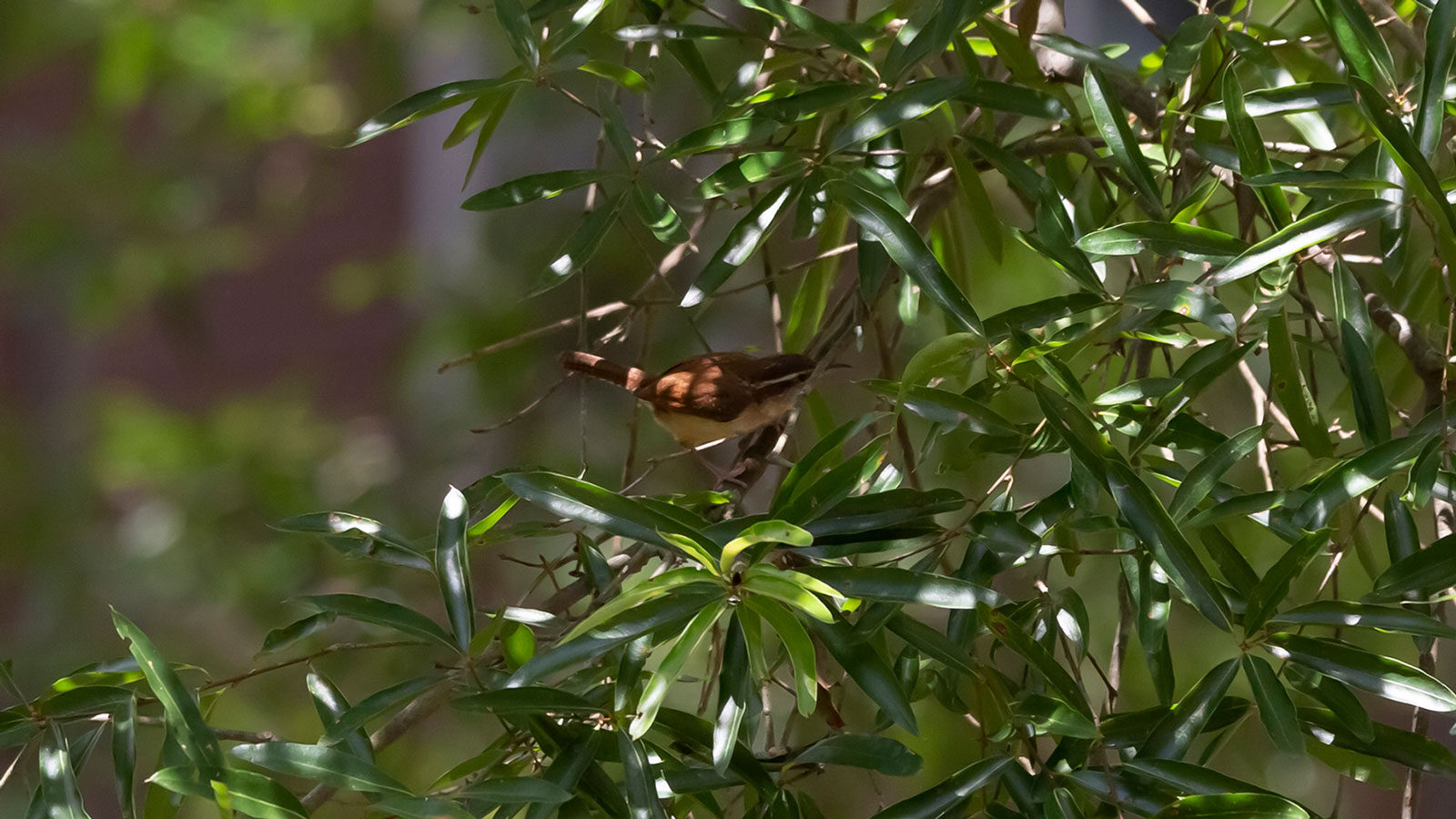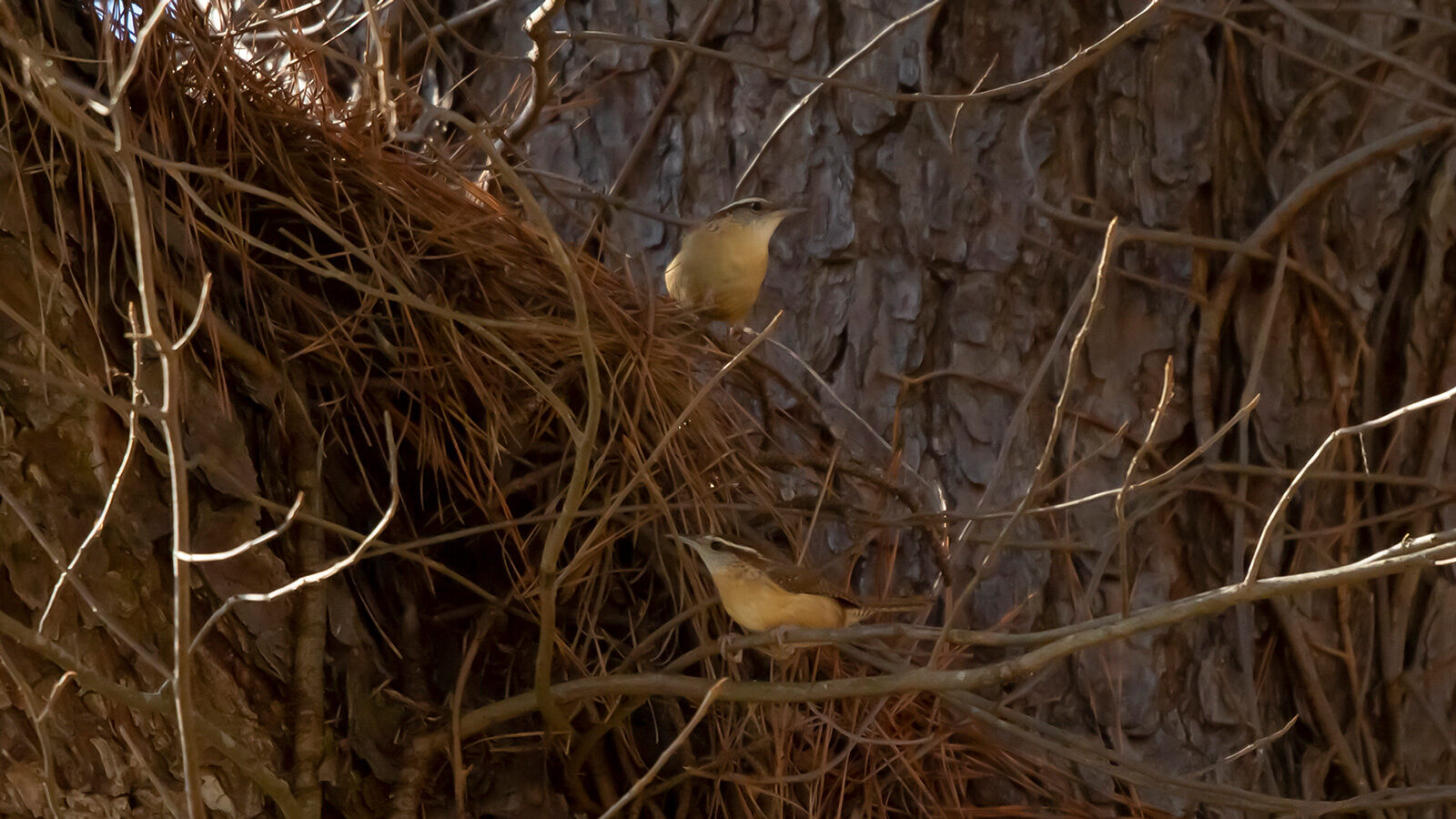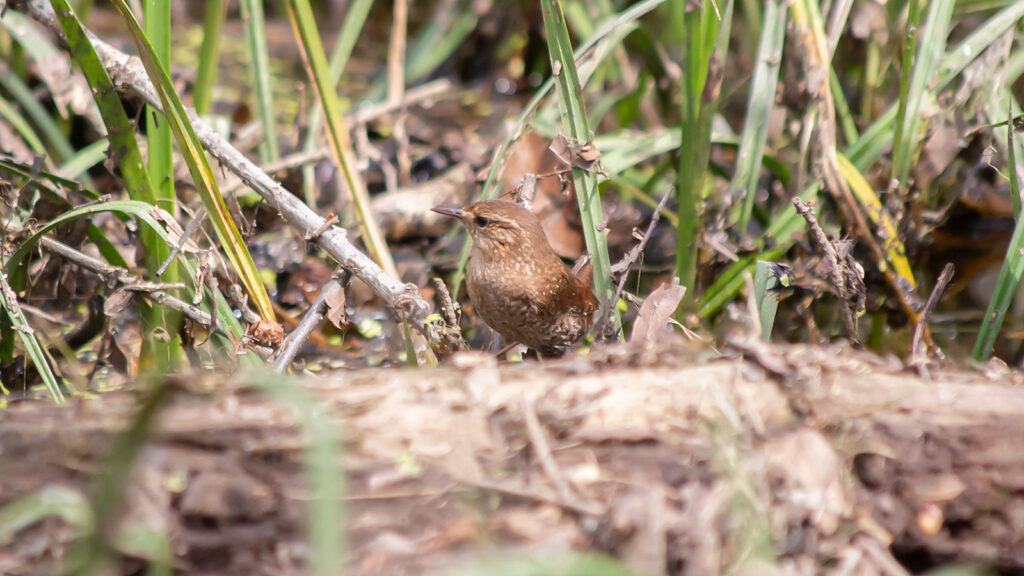
Did you know that Carolina wrens are monogamous, meaning that they have the same mate for life?
Carolina Wrens
at
a Glance

Key Features:
Carolina wrens are reddish-brown with orange underparts and white chins, throats, and eyebrows.
Least Concern - Population Increasing
Habitat:
Bottomland forests, lowland cypress swamps, and yards
nesting habits:
Carolina wrens build cup-shaped, made of bark, dead leaves, feathers, grass, bark, pine needles, plastic, snakeskin, straw, string, set in open cavities off the ground. Carolina wrens also build their nests in mailboxes.
seasons Carolina wrens are active in our area:
All year
Diet:
Insects, spiders, frogs, lizards, snakes, fruit, pulp, and seeds
hunting Behavior:
Carolina wrens forage on the ground.
commonly confused with:
House Wrens and Winter Wrens

Carolina wrens are often confused with house wrens and winter wrens because they are small brown birds.

Carolina wrens have orange bellies and are a brighter brown than house wrens and winter wrens.